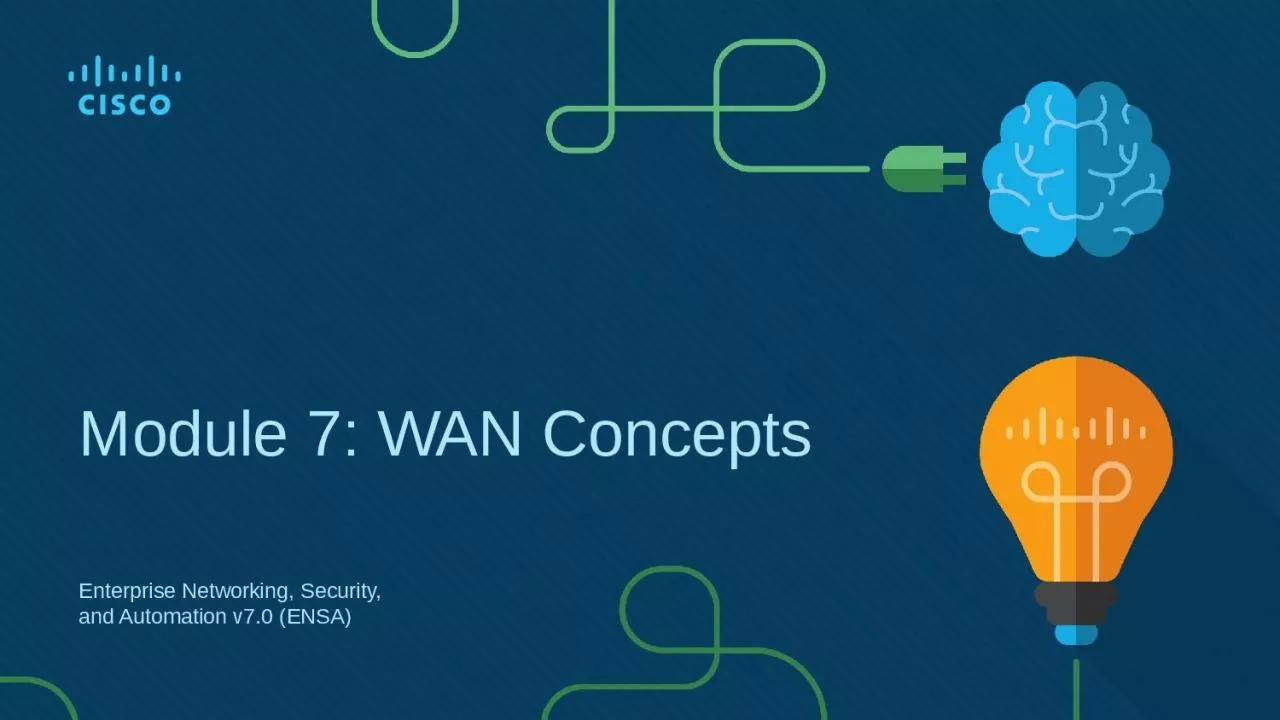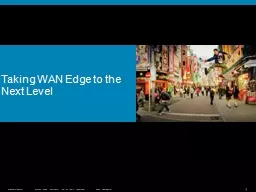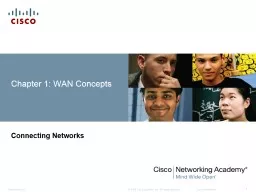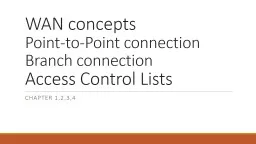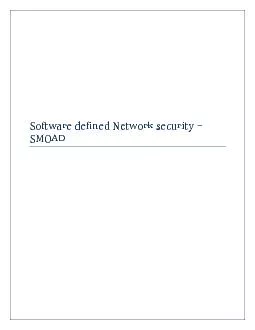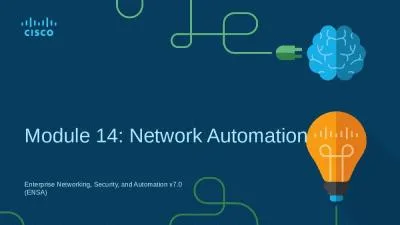PPT-Module 7: WAN Concepts Enterprise Networking, Security, and Automation v7.0 (ENSA)
Author : summer | Published Date : 2023-11-08
Module Objectives Module Title WAN Concepts Module Objective Explain how WAN access technologies can be used to satisfy business requirements Topic Title Topic
Presentation Embed Code
Download Presentation
Download Presentation The PPT/PDF document "Module 7: WAN Concepts Enterprise Networ..." is the property of its rightful owner. Permission is granted to download and print the materials on this website for personal, non-commercial use only, and to display it on your personal computer provided you do not modify the materials and that you retain all copyright notices contained in the materials. By downloading content from our website, you accept the terms of this agreement.
Module 7: WAN Concepts Enterprise Networking, Security, and Automation v7.0 (ENSA): Transcript
Download Rules Of Document
"Module 7: WAN Concepts Enterprise Networking, Security, and Automation v7.0 (ENSA)"The content belongs to its owner. You may download and print it for personal use, without modification, and keep all copyright notices. By downloading, you agree to these terms.
Related Documents

